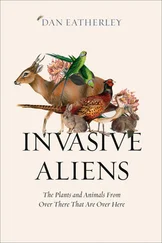Andrew H. Cobb - Herbicides and Plant Physiology
Здесь есть возможность читать онлайн «Andrew H. Cobb - Herbicides and Plant Physiology» — ознакомительный отрывок электронной книги совершенно бесплатно, а после прочтения отрывка купить полную версию. В некоторых случаях можно слушать аудио, скачать через торрент в формате fb2 и присутствует краткое содержание. Жанр: unrecognised, на английском языке. Описание произведения, (предисловие) а так же отзывы посетителей доступны на портале библиотеки ЛибКат.
- Название:Herbicides and Plant Physiology
- Автор:
- Жанр:
- Год:неизвестен
- ISBN:нет данных
- Рейтинг книги:5 / 5. Голосов: 1
-
Избранное:Добавить в избранное
- Отзывы:
-
Ваша оценка:
- 100
- 1
- 2
- 3
- 4
- 5
Herbicides and Plant Physiology: краткое содержание, описание и аннотация
Предлагаем к чтению аннотацию, описание, краткое содержание или предисловие (зависит от того, что написал сам автор книги «Herbicides and Plant Physiology»). Если вы не нашли необходимую информацию о книге — напишите в комментариях, мы постараемся отыскать её.
Discover the latest developments in herbicide and weed biology Herbicides and Plant Physiology,
Arabidopsis
Herbicides and Plant Physiology
Herbicides and Plant Physiology — читать онлайн ознакомительный отрывок
Ниже представлен текст книги, разбитый по страницам. Система сохранения места последней прочитанной страницы, позволяет с удобством читать онлайн бесплатно книгу «Herbicides and Plant Physiology», без необходимости каждый раз заново искать на чём Вы остановились. Поставьте закладку, и сможете в любой момент перейти на страницу, на которой закончили чтение.
Интервал:
Закладка:
7 Plants for the future: genetic diversity. In 2016, the Royal Botanic Gardens, Kew, UK, released a report on the state of the world’s plants. It noted that an estimated 31,000 plant species have a documented use for medicines, food and materials. There are an estimated 391,000 vascular plants known to science of which 369,000 species are flowering plants. A further 2000 new vascular species are described each year. Many are wild relatives of known crops that can be a source of genetic variation to improve our crops in the future, such as tolerance to drought or possess a unique metabolism. Some 21% of the world’s plants, however, are currently threatened with extinction, especially in declining rainforests. Humankind must preserve this genetic biodiversity in seed banks at all costs for future generations ( www.stateoftheworldsplants.org). The human population derives 50% of its calorific intake from only three species, namely rice, wheat and maize. The rest is derived from only 20 species. Having so few staple crops means that we lack diversity in our diets and have an over‐reliance on the chosen few. Can conventional plant breeding produce the advances in yield needed to feed our global population? Perhaps it can, with the application and more widespread adoption of gene editing techniques developed in the last decade.
8 Can we survive without plant protection products? Currently, global agriculture is heavily reliant on plant protection products, such as herbicides, plant growth regulators, fungicides and insecticides, to maximise crop yields. Without an equivalent process, yields would be reduced by at least 20–40%, so an increase in food prices would inevitably follow, with public unrest and food volatility. The reader is encouraged to note Oerke and Dehner (2004) and Pesticides in Perspective (n.d.) for further details.I note with concern that the EU is planning to withdraw as many as 75 active ingredients from the crop protection armoury. In addition to yield losses, this will erode farmers’ margins and reduce farm productivity across the EU, and over a million jobs are at risk of being lost. There are no current viable alternatives to the use of agrochemicals. Their judicious use should be promoted and these agents preserved if we are to feed the world and ensure future food security. In order for plant protection products to be used effectively, it is imperative to have an understanding of the biology of the target organisms and how an active ingredient works in both the plant and the environment. Thus, an understanding of weed biology, soil science and plant physiology underpins herbicide choice, use and effectiveness.
9 Is science and technology the answer? Scientists and technologists consider that appropriate scientific and technological developments might come to the rescue of humankind. Why such optimism? The answer lies in recent research findings reported in the plant sciences literature, some examples of which are noted below. The first reports a rice cultivar that has been engineered to have fewer stomata, which has resulted in an increased tolerance to drought and water availability, giving equivalent or increased rice yields. The importance of this finding is the knowledge that 2500 litres of water are typically required to produce 1 kg of rice. The authors consider that rice plants with fewer stomata should perform better when limitations on water supply threaten food security (Caine et al., 2018).A second innovation is the use of gene editing to understand how plants are able to perceive and respond to environmental signals at the cellular level and respond by alterations in gene expression. In this way, plant scientists are able to understand how biotic and abiotic stimuli, such as responses to disease or environmental change, can alter growth, development and crop yield. This advance is largely due to the generation and testing of mutants that can be incorporated into plant breeding programmes. Examples include resistance to drought, resistance to salinity, temperature and water‐logging, insect and disease resistance, potatoes free from late blight, enhanced concentrations of omega oils and vitamins, fruit and vegetables that do not turn brown on impact, and low‐gluten wheat, to name but a few.A third example is the RIPE project – Realising Increased Photosynthetic Efficiency –for sustainable increases in crop yield ( www.ripe.illinois.edu). This is a collaboration of US, Australian, Chinese, German and UK universities that began in 2012 with an aim of increasing global agricultural production. Several research strategies have been developed with successful investigations that include:relaxing mechanisms of photoprotection;by‐passing photorespiration;optimising enzyme activity in the photosynthetic carbon reduction cycle;increasing the efficiency of RuBisCo; andoptimising canopies for photosynthesis.Also of note the C4 Rice Project ( www.c4rice.com) that is jointly funded by the Bill and Melinda Gates Foundation, in which researchers from seven institutions in five countries are working together to develop high‐yielding rice cultivars. Their aim is to use gene editing to introduce C4 photosynthetic machinery into rice, a C3 crop, which currently accounts for 19% of all calories consumed in the world. If successful, rice plants could be 50% more productive.
10 Finally, the ‘Hands Free Hectare’ project in the UK, demonstrated in 2016 that it is possible to drill, tend and harvest a crop of spring barley without operators of machines or agronomists in the field. It proves that there is no technical barrier to automated field agriculture. Weed control is achieved by aerial sensors that ensure that only weed‐infested areas of a field are sprayed, rather than the whole field, thereby reducing inputs. It is assumed that unmanned automation will become an increasingly important part of agriculture in the future. Achieving precision spraying with dedicated robots fitted with associated sensors is a current engineering challenge (Ghaffarzadeh, 2017). Flavell (2016) has argued that we need to generate clear plans to increase the confidence of investors and society in the future of the plant sciences. Our collective challenge is therefore to see technological advances in the engineering and plant sciences lead to new concepts, products and innovations that will improve the efficiencies of agriculture in the future.
11 A key conclusion of the 2019 cross‐sector review of weed management, commissioned by the UK Agriculture and Horticulture Development Board and the British Beet Research Organisation, was that the approach to Weed Management in the UK needs to be overhauled, and a major investment is required. The review noted that, inter alia: (a) essential information on weed management could be lost to the industry without appropriate key sources of references and an archive; (b) coordinated programmes of research and knowledge transfer are necessary to make the best use of depleted national funding; and (c) the plant protection industry needs to be more unified and strategic to maximise the chances of such methods and research results making an economic difference to farms and growers. I hope that the contribution of research institutes, colleges and universities are to the fore in any future update in the training of the next generations of plant protection personnel.
12 As we have entered a new decade, agrochemical inputs are becoming increasingly under scrutiny and some would argue that agrochemical technology is reaching its limits (Altieri, 2019). Why is this?Large‐scale crop monocultures occupy about 80% of the 1.5 billion hectares currently used in global agriculture.Approximately 2.3 billion kg of pesticides are applied each year to keep weeds, fungal and insect pests at bay.However, less than 1% of pesticides reach the target weed or pest, so that most ends up in the soil, water and the air, leading to declines in biodiversity, especially pollinators, and the natural enemies of pests.Monoculture agriculture leads to pesticide resistance.It follows that the removal of pesticides and herbicides will restore biodiversity and a renewed interest in the biological control of pests. Biodiversity can also be enhanced using cover crops, inter‐cropping, rotations, agroforestry and the introduction of livestock into crop fields. Surrounding these fields with hedgerows and corridors also generates more complex habitats, as field margins are reservoirs of the natural enemies of crop pests, and provide over‐wintering sites for wildlife. In this way, it is thought that replacing monocultures with more complex agricultural systems will contribute to yield advantages via improved biodiversity, enhanced soil quality and resilience to climate change. Such arguments are ecologically persuasive, but more evidence, including detailed cost/benefit analysis, is required before extrapolation to weed control by herbicides. Nonetheless, the observed global increase in weed resistance to herbicides in recent decades is clearly linked to monoculture, and shows no signs of decline.
Читать дальшеИнтервал:
Закладка:
Похожие книги на «Herbicides and Plant Physiology»
Представляем Вашему вниманию похожие книги на «Herbicides and Plant Physiology» списком для выбора. Мы отобрали схожую по названию и смыслу литературу в надежде предоставить читателям больше вариантов отыскать новые, интересные, ещё непрочитанные произведения.
Обсуждение, отзывы о книге «Herbicides and Plant Physiology» и просто собственные мнения читателей. Оставьте ваши комментарии, напишите, что Вы думаете о произведении, его смысле или главных героях. Укажите что конкретно понравилось, а что нет, и почему Вы так считаете.











